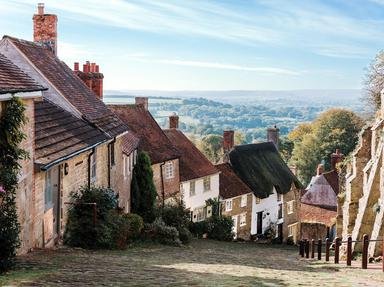Quiz Answer Key and Fun Facts
1. I was born in London and, during my early years, lived in a very 'Angelic' borough north of the River Thames noted for its famous 'red and white' soccer team known as 'The Gunners'. Which borough is this?
2. As I grew into my late teens I moved from my family home to a tiny, frugal bed sitting room in a beautiful city of dreaming spires set in the heart of England. Everywhere were historic buildings, colleges and a meandering river full of punts and scholars. Where was I?
3. My next home was also in a city in middle England famous for an historic naked lady and for its modern, post war cathedral. If you are being ignored you are sometimes said to have been 'sent' to this place. Where is this?
4. I enjoyed a short time living back in London again but this time in a town set in a north London borough of the same name famous for its 'hill' and its public school. Its name sounds like a piece of old farming equipment.
5. My next home was much further north and was situated in an old Roman city situated on the river Dee, in the County of Cheshire, and was noted for its city walls, cathedral, racecourse and its shopping 'Rows'.
6. Yet another change of house but this time not very far from the last one in Cheshire. The change took me to a busy, industrial and fairly modern town situated on the Manchester Ship Canal and the Shropshire Union Canal and dating back only to around 1800. A clue is in the name.
7. After a few years living among the delights of Merseyside and the Wirral, I moved south again nearer to my roots. My new home was situated in a south east Buckinghamshire village where the English poet Thomas Gray was inspired, by the Parish Church of St. Giles, to write his famous poem 'Elegy Written in a Country Churchyard'. Where was this?
8. For a short while I lived in a flat [apartment] in a busy, cosmopolitan town situated in the county of Berkshire. Its name is descriptive of 'an area of soft muddy ground or swamp' and is the subject of a well known poem by the English poet John Betjeman who was not impressed with the place and asks; "Come friendly bombs, and fall on --- ". Where is this place?
9. My next move was to a small and ancient rural village in East Kent called Ringwould. My house had views across open countryside and I loved to walk miles with my dog. This part of the world was tagged 'Hellfire Corner' during a war ... but which war?
10. The last move was to a seaside town in East Kent which has a name sounding like something you do with playing cards or perhaps a name for timber that is soft and easy to saw.
Source: Author
NosliwYnot
This quiz was reviewed by FunTrivia editor
agony before going online.
Any errors found in FunTrivia content are routinely corrected through our feedback system.

